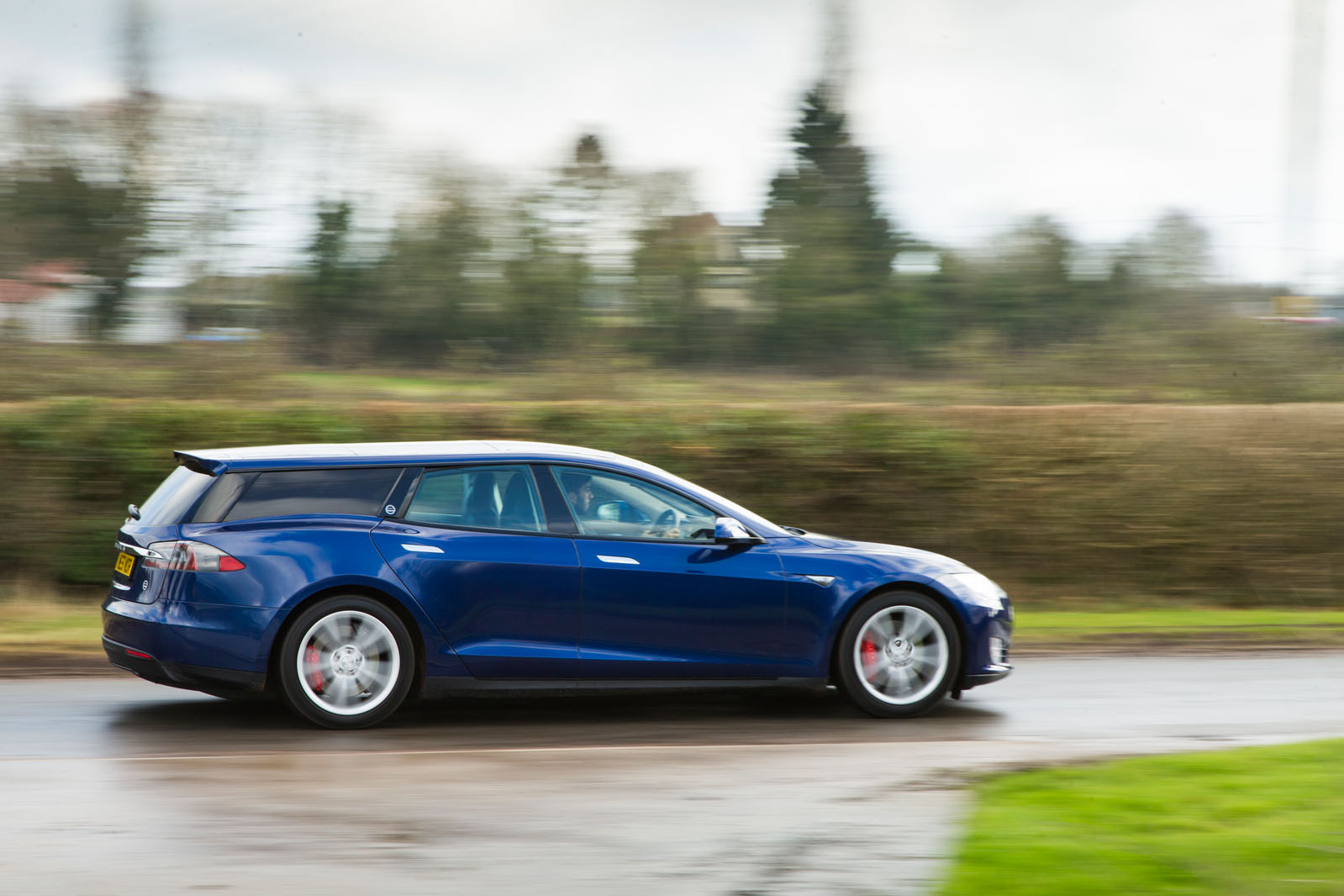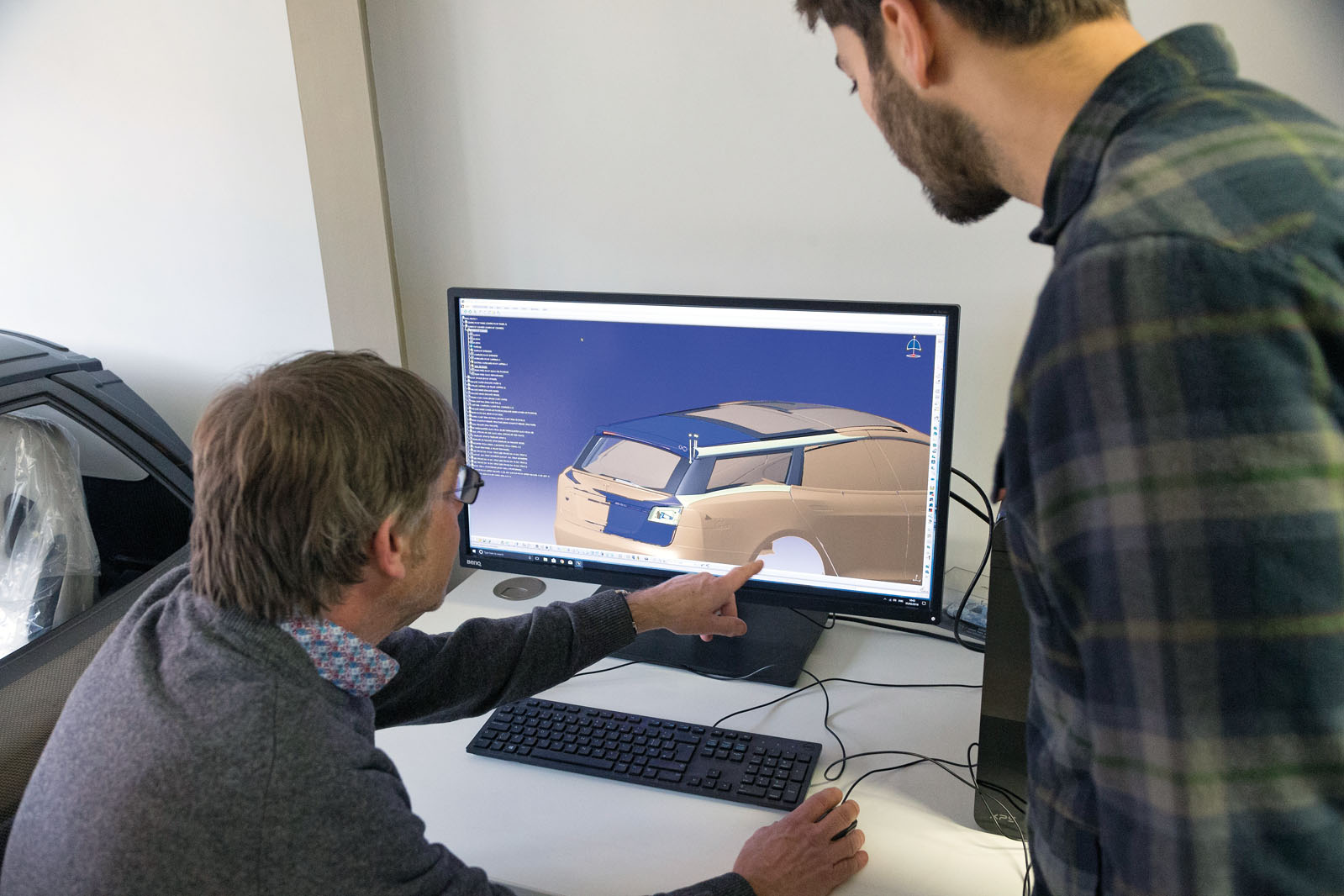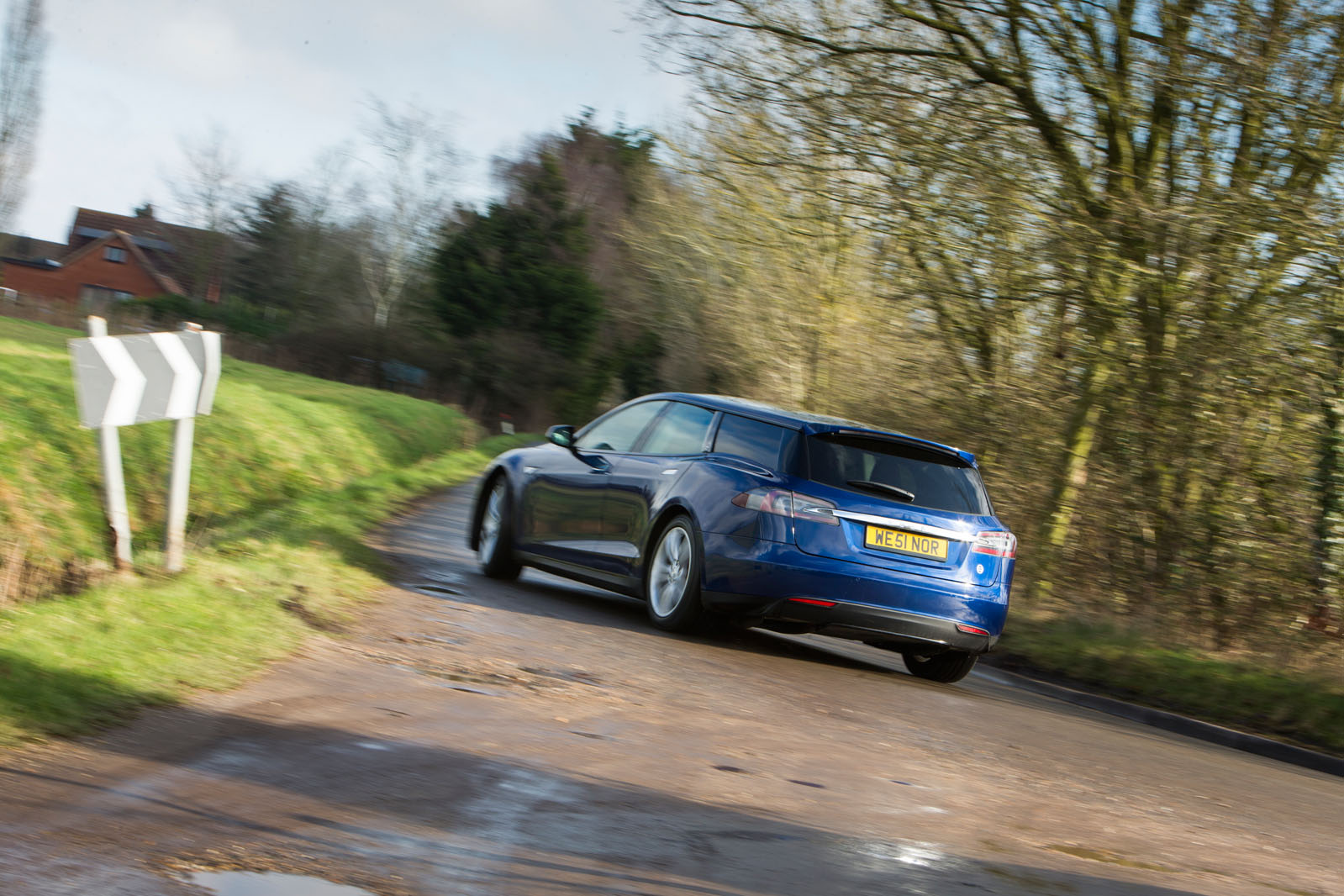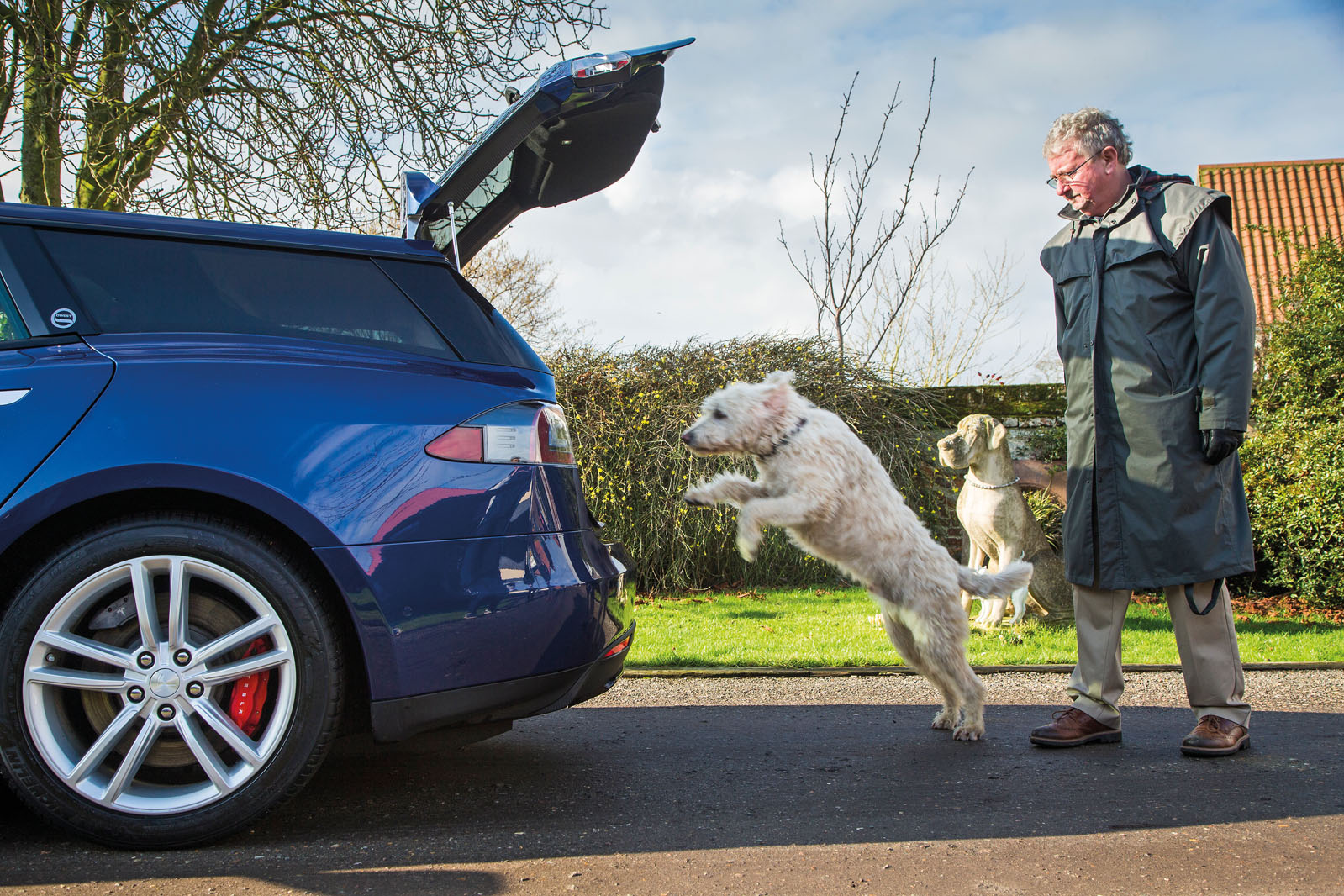They say all great ideas start in a pub. Science has yet to explain why - probably because no one has produced a coherent post-session report - but evidence suggests a top lip dampened by the froth of ale really motivates a creative mind.
For some, these great pub ideas will best lost in the mists of a hangover but, for others, something truly impressive can follow. Take the Tesla Model S Shooting Brake you see on these pages, which was first coined at The Bird in Hand near Hethel in Norfolk.
“Three of us were having a catch-up chat and a pint over lunch when we thought it up,” says Dorian Hindmarsh, managing director of the coachbuilding company Qwest that produced the car. “Phil, who had just bought a Model S P90D, said he had nowhere to carry his dogs, so Jim said why don’t you make it an estate car. Roll on 18 months and there’s one sitting outside.”

Phil Hayton, director of Qwest and the man who bravely allowed the part-dismantling of his Model S to make the world’s first battery-electric shooting brake, liked the idea of an estate because it would provide more room for Ted, his six-year-old labradoodle. Jim Router, a technical genius with 40 years of experience, joined the venture as engineering director with such confidence that he said it’d be “a doddle” to convert the saloon.
Of course, it was inevitably more complicated than that, as Router explains upon our visit to Qwest’s Dereham base for a look at the finished car. “The challenge was trying to design the changes so they are repeatable,” he says, standing beside the carbonfibre tub of a Jaguar XJR-8 and a 1:8 scale McLaren F1 model, mementos of former projects he has played a key part in. “It’s no good just cutting into it; we had to leave all major structural parts there so the crumple zones are unaffected.” This is where Router’s involvement paid dividends.
Having worked for McLaren, Lotus and TWR (the latter on its Jaguar Le Mans racers, including the winning XJR-9), as well as with Riversimple on its new Rasa hydrogen car, he knew how important these first stages would be to ensure as smooth a progression from design to production as possible. “Other companies sometimes cut into the first car and work it out as they go,” says Hindmarsh, “but we had the car laser scanned so Jim could create a full 3D digital model before any work began.” Three designs were made, one with the tailgate split in the D-pillar, another with a fully split tailgate and the third was the design you see here.

A 1:10 scale model with an interchangeable rear was produced for Hayton to live with for a few weeks to help make his decision. With the final design selected, the team went to Tesla for its approval. Hindmarsh said Elon Musk’s brand was “very supportive” of the idea, so long as no modifications were made to the car’s crash structure and electronics. As such, beneath the elongated rear section remain the original C-pillars, with the new car’s tinted rear glass hiding them from view.
The new bodywork that surrounds them is made entirely from carbonfibre, something all three Qwest founders agree will remain the core material of al future products because of its lightness and strength. In the Model S, it helped the team trim 12kg from the car’s kerb weight despite its expanded surface area.
“We sourced as many of the new materials as we could locally,” says Hindmarsh. “Aside from the Pilkington glass rear screen, which was an off-the-shelf product, pretty much everything we’ve added to the car is bespoke, but we made sure that the new parts can be readily sourced again and they’re all E-marked [with European certification].”
Even the interior fabric, which was sourced from a local Norfolk trimmer, looks and feels identical to the rest of the cabin – an illustration of the lengths the team went to ensure a seamless transition from original to new. Ted certainly approves, as he spends most of his time during our visit comfortably nestled in the warmth of the new car, only hopping out for our test drive.

Hindmarsh said the Shooting Brake could now offer up to 7.4ft of uninterrupted luggage space, three inches more rear head room and space for two adults (as opposed to children) in the boot, when Tesla’s optional rearmost seats are fitted. But these improvements have no noticeable impact on the car’s driving experience. There are no new sounds and the car rides and corners exactly as a regular Model S. Its defining trait, that scenery-blurring acceleration, remains unchanged.
There is, of course, one catch: the cost. For customers, the process of converting their car into a shooting brake is expected to cost about £70,000, which is more than the price of a new Model S 75D. But just 30 examples are due to be made so that money does buy a level of exclusivity, as well as practicality, that few cars can match.
With a public debut at the London motor show around the corner and a list of interested clients already growing in number, the Qwest team is certainly optimistic. “This is a car for people who want to be different, for people who want to be part of future,” says Hindmarsh. “I can imagine our car looking as at home in Knightsbridge as it does on the country roads of Norfolk.”

Three more unlikely estate conversions:
BENTLEY CONTINENTAL GT FLYING STAR - Milanese coachbuilder Touring Superleggera produced an estate version of the Bentley Continental GT called the Flying Star back in 2011. It elegantly added a wider, more accessible luggage compartment to the two-door’s body and came exclusively with the W12 engine.
MASERATI QUATTROPORTE CINQUEPORTE - A Maserati Quattroporte was converted into an estate for a wealthy Middle Eastern customer by specialist Italian coachbuilder StudioM. The costly process included extending the roofline and even repositioning the fuel tank to maximise boot space. Just one example was produced.
ASTON MARTIN VIRAGE SHOOTING BRAKE ZAGATO - Italian coachbuilder Zagato Atelier created a Aston Martin Zagato Shooting Brake to celebrate his company’s long relationship with the British brand. The model followed the DBS Coupé Zagato Centennial and DB9 Spyder Zagato Centennial as the final piece of a trilogy collection.
Read more
Tesla Model S review
Tesla Roadster review
Tesla Model X review
Tesla Model S

Source : autocar

